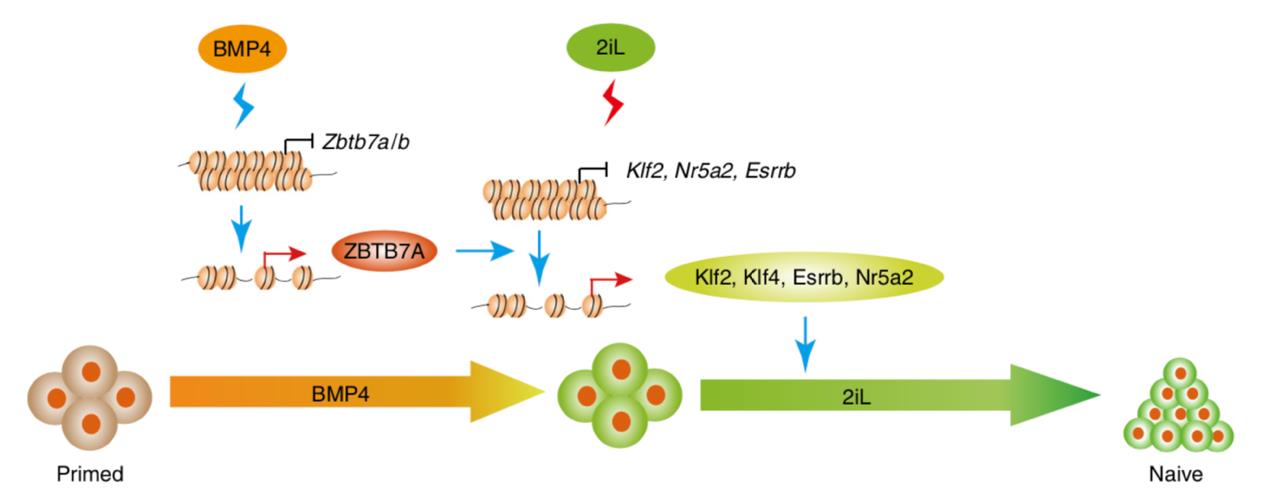Novel system reveals the mechanisms of pluripotency transition
In a study published online in Nature Cell Biology
Mouse embryonic stem cells exist in two unique pluripotent states, Naive state and Primed state. PrimPNT represents the reverse of the embryonic development stage from post-implantation to pre-implantation, which needed to overcome some important epigenetic barriers. In the previous reports, PNT usually required the infection of transcription factors by viral vector, which is cumbersome in operation and low in efficiency,
Importantly, the withdrawal of the BMP signal will totally abolish the PNT process, thus they termed this newly established PNT system as BiPNT (BMP induced PNT).
They for the first time identified transcription factors Zbtb7a and Zbtb7b, as novel targets of BMP4, could regulate PNT by affecting chromatin remodeling. ChIP-seq experiment further proved that Zbtb7a directly activates the expression of naive pluripotency genes such as Esrrb, Klf2 and Nr5a2, by binding to the upstream regulate elements in the chromatin, thus regulates the occurrence of PNT.
This study improved the PNT transition technic and revealed novel mechanisms for understanding the PNT process. The BiPNT system provides a wonderful paradigm for studying the mechanism of how extracellular signal mediated cell fate transition. In addition, this study offered a valuable reference for the acquisition of naive human embryonic stem cells.
Cell reprogramming and cell fate transition are determined by sophisticated signals transduction and epigenetic regulation. The underlying mechanism and working models for these processes are core issues in the field of cell biology.

A model for BMP4-induced PNT through ZBTB7A/B.(Image By Liu Jing's group)
Contact:
LIU Jing, Ph.D Principle Investigator
Guangzhou Institute of Biomedicine and Health (GIBH), Chinese Academy of Sciences
E-mail: liu_jing@gibh.ac.cn
Attachment Download:
-
Contact
-
Reference
-
Related Article